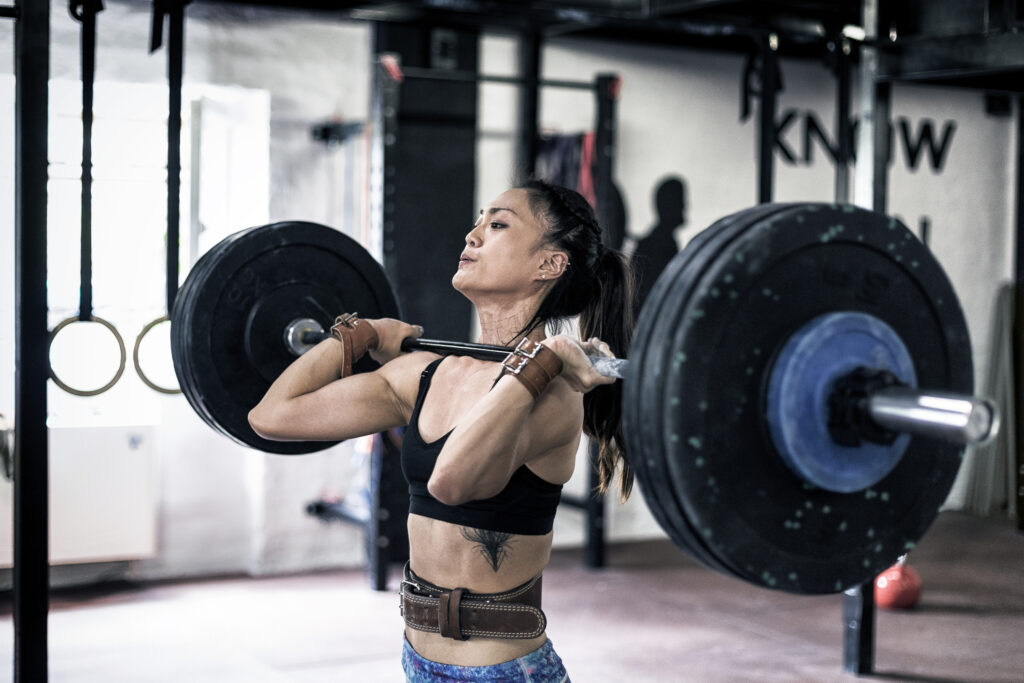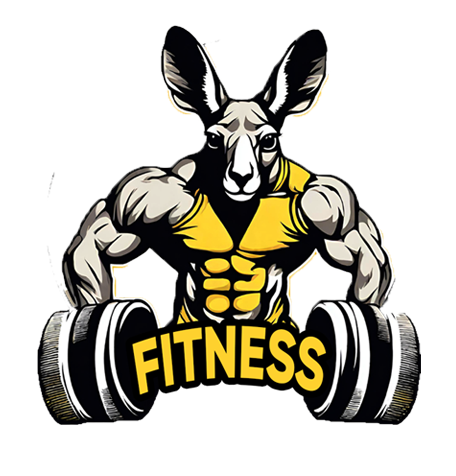
Table of Contents
ToggleIntroduction
Powerlifting, a robust strength sport that encompasses three primary lifts – squat, bench press, and deadlift – has garnered popularity for its capacity to cultivate raw strength. If you’re a novice looking to commence a powerlifting journey, this guide will assist you in navigating the fundamentals and set you on the path to success. Understanding the basics, creating a training plan, focusing on nutrition and recovery, and connecting with the powerlifting community are crucial elements that will shape your experience.
Understanding the Basics of Powerlifting
The Three Main Lifts
At the heart of powerlifting are three fundamental exercises that target different muscle groups and collectively assess overall strength. The squat targets the lower body, the bench press works on the upper body, and the deadlift engages multiple muscle groups, including the back and legs. Each lift has its unique form and technique, making it essential for beginners to prioritize proper execution.
Proper Form and Technique
Technique is paramount in powerlifting. Ensuring proper form not only optimizes muscle engagement but also reduces the risk of injury. Beginners should focus on mastering the correct body positioning, joint angles, and breathing techniques for each lift. Common mistakes, such as rounding the back during deadlifts or improper foot placement in squats, should be actively avoided to lay a solid foundation for future progress.
Equipment Overview
While powerlifting can be performed with minimal equipment, understanding the purpose and benefits of specialized gear is important. Investing in proper equipment, such as powerlifting shoes for stability and a supportive belt for spinal protection, can enhance your performance and prevent injuries. Knowing the characteristics of different barbells and plates adds another layer to your training knowledge.
Creating a Training Plan
Assessing Your Current Fitness Level
Before diving into powerlifting, it’s crucial to assess your current fitness level. Understanding your strengths and weaknesses allows you to tailor your training program accordingly. This might involve a series of baseline strength tests to determine your one-repetition maximum (1RM) for each lift. Realistic self-assessment sets the stage for achievable goals.
Setting a Realistic Training Schedule
Consistency is key in powerlifting. Designing a realistic and sustainable training schedule is essential for long-term success. Beginners should start with three to four training sessions per week, gradually increasing intensity as their strength improves. Including rest days in your schedule is equally important, allowing muscles to recover and adapt to the demands of heavy lifting.
Warm-Up and Cool Down
Never underestimate the power of a proper warm-up and cool down. Warming up prepares your body for the upcoming demands by increasing blood flow and flexibility. Dynamic stretches and light cardio are effective warm-up components. On the flip side, cooling down with static stretches and foam rolling aids in muscle recovery and flexibility.
Progressive Overload Principle
The progressive overload principle is the cornerstone of strength development. Gradually increasing the weight, sets, or repetitions challenges your muscles, promoting continuous adaptation and growth. Beginners should start with manageable weights and progressively increase intensity as their strength improves. Recording your progress in a workout log becomes invaluable in tracking your journey and adjusting your plan accordingly.
Nutrition and Recovery

Importance of Proper Nutrition
While powerlifting places a significant demand on physical strength, nutrition plays a crucial role in supporting overall performance and recovery. Proper nutrition involves understanding and balancing macronutrients (protein, carbohydrates, and fats) and ensuring adequate intake of micronutrients and hydration. Protein is particularly essential for muscle repair and growth, making it a focal point for powerlifters.
Recovery Strategies
Recovery is as important as training itself. Quality sleep is a non-negotiable aspect of recovery, as it allows the body to repair and regenerate tissues. Active recovery, incorporating light exercises or activities like yoga, aids in muscle relaxation and promotes flexibility. Stress management is another often overlooked aspect that can significantly impact recovery.
Tracking Progress
Keeping a Workout Log
A workout log is your roadmap to progress. Documenting each training session allows you to track your lifts, identify patterns, and make informed decisions about adjustments to your plan. It becomes a valuable tool for assessing what works and what doesn’t, enabling you to fine-tune your approach and set realistic expectations.
Monitoring Strength Gains
As a beginner, it’s essential to celebrate small victories. Regularly reassessing your strength gains keeps you motivated and provides insights into areas that may need more attention. Whether it’s a modest increase in weight or an improvement in form, acknowledging progress is vital for maintaining enthusiasm throughout your powerlifting journey.
Adjusting Your Training Plan
Flexibility is key in adapting your training plan. If you encounter plateaus or unforeseen challenges, don’t hesitate to modify your approach. This could involve changing your training split, incorporating new exercises, or adjusting your intensity and volume. A well-rounded and adaptive plan is more likely to yield consistent progress.
Overcoming Challenges
Dealing with Plateaus
Plateaus are a natural part of any fitness journey. Instead of becoming discouraged, view them as opportunities for growth. Introducing variety into your training routine, incorporating deload weeks, or seeking guidance from experienced lifters can help break through plateaus and keep you on track.
Common Injuries and Injury Prevention
Powerlifting, like any physical activity, carries some risk of injury. Prioritizing proper form and incorporating accessory exercises that target weak areas can significantly reduce the risk of injuries. Listening to your body, recognizing pain versus discomfort, and addressing any issues promptly contribute to injury prevention.
Mental Toughness and Motivation
Building mental toughness is a parallel journey to building physical strength. Powerlifting requires perseverance and commitment. Setting realistic goals, visualizing success, and cultivating a positive mindset are integral components of staying motivated. Surrounding yourself with a supportive community can provide the encouragement needed during challenging times.
Joining the Powerlifting Community
Finding a Local Gym or Powerlifting Club
Community is a powerful motivator in powerlifting. Finding a local gym with experienced powerlifters or joining a powerlifting club creates a supportive environment. Engaging with like-minded individuals not only provides valuable insights and advice but also fosters a sense of camaraderie that can enhance your overall experience.
Online Communities and Resources
In the digital age, the powerlifting community extends beyond local gyms. Online communities offer a vast pool of knowledge and support. Platforms like forums, social media groups, and video-sharing sites connect you with lifters worldwide. Accessing expert advice, participating in discussions, and sharing your journey can be both informative and inspiring.
Building a Support System
A supportive network is a cornerstone of success. Whether it’s training partners, friends, or family, having individuals who understand and encourage your powerlifting journey is invaluable. Celebrate achievements together, share challenges, and draw motivation from the collective strength of your support system.
Frequently Asked Questions
Addressing Common Concerns for Beginners
As a beginner, it’s natural to have questions and concerns. Common concerns, such as fear of injury or uncertainty about program effectiveness, can be addressed through education and seeking guidance from experienced lifters or coaches. Acknowledging and addressing these concerns early on can prevent unnecessary setbacks.
Tips for Women in Powerlifting
Powerlifting is inclusive and empowering for everyone. Women, in particular, may have unique questions or concerns
about entering the world of powerlifting. Empowering women to pursue strength goals, dispelling myths about lifting heavy weights, and emphasizing the physical and mental benefits are essential components of fostering inclusivity in the powerlifting community.
Conclusion
As you embark on your powerlifting journey, take time to celebrate every achievement, no matter how small. Each lift, every increase in weight, and the consistency in your training are all victories that contribute to your overall progress. Recognizing and celebrating these moments keeps your motivation high.
Powerlifting is a lifelong journey of self-discovery and improvement. While setting and achieving short-term goals is essential, maintaining a long-term perspective is equally crucial. As you gain experience and strength, consider new challenges, competitions, or variations in your training to keep your journey dynamic and rewarding.
The powerlifting journey is about continuous improvement, both physically and mentally. Embrace the process, learn from challenges, and enjoy the transformative power of strength training. Your commitment to self-improvement through powerlifting lays the foundation for a healthier, stronger, and more resilient version of yourself.
FAQs
Q: What is powerlifting, and who can do it?
A: Powerlifting is a strength sport involving squat, bench press, and deadlift. Anyone, regardless of experience, can start.
Q: How do I begin my powerlifting journey?
A: Start by learning proper form, assessing your fitness level, and gradually incorporating the Big 3 lifts into your routine.
Q: Do I need special equipment to start powerlifting?
A: While minimal gear suffices, investing in quality shoes, a belt, and wrist wraps can enhance performance and safety.
Q: How often should I train, and what about rest days?
A: Beginners can train 3-4 times a week, with rest days for muscle recovery. Consistency is crucial for long-term success.
Q: What are the benefits of powerlifting for beginners?
A: Powerlifting builds strength, muscle, and confidence. It’s a lifelong journey with physical and mental empowerment.

1 Comment
Your comment is awaiting moderation.
amoxicillin 500mg capsule cost: generic amoxil 500 mg – rexall pharmacy amoxicillin 500mg
Your comment is awaiting moderation.
ciprofloxacin generic: ciprofloxacin 500mg buy online – buy ciprofloxacin
Your comment is awaiting moderation.
where can i get cheap clomid: where can i buy cheap clomid without a prescription – generic clomid price
http://amoxildelivery.pro/# cost of amoxicillin 875 mg
Your comment is awaiting moderation.
https://doxycyclinedelivery.pro/# doxycycline medicine in india
ciprofloxacin generic price cipro cipro 500mg best prices
Your comment is awaiting moderation.
http://clomiddelivery.pro/# can i order generic clomid without a prescription
Your comment is awaiting moderation.
where can i buy doxycycline over the counter: doxycycline 10mg cost – doxycycline tablets buy online
Your comment is awaiting moderation.
buy vibramycin: doxycycline 100mg capsules – doxycycline 400 mg tablet
https://ciprodelivery.pro/# ciprofloxacin 500mg buy online
Your comment is awaiting moderation.
https://paxloviddelivery.pro/# paxlovid buy
Your comment is awaiting moderation.
https://amoxildelivery.pro/# azithromycin amoxicillin
paxlovid cost without insurance paxlovid india п»їpaxlovid
Your comment is awaiting moderation.
how much is amoxicillin prescription: amoxicillin 500 mg – amoxicillin for sale online
http://paxloviddelivery.pro/# paxlovid pharmacy
Your comment is awaiting moderation.
Paxlovid over the counter: paxlovid cost without insurance – п»їpaxlovid
Your comment is awaiting moderation.
http://doxycyclinedelivery.pro/# doxyhexal
Your comment is awaiting moderation.
generic amoxicillin: amoxicillin from canada – amoxicillin script
https://doxycyclinedelivery.pro/# doxycycline for sale over the counter
ciprofloxacin order online buy cipro online buy cipro
Your comment is awaiting moderation.
http://doxycyclinedelivery.pro/# order doxycycline
buy paxlovid online paxlovid generic paxlovid for sale
Your comment is awaiting moderation.
Paxlovid over the counter: paxlovid price – paxlovid india
http://doxycyclinedelivery.pro/# doxycycline capsules price in india
Your comment is awaiting moderation.
http://doxycyclinedelivery.pro/# buy doxycycline online nz
Your comment is awaiting moderation.
doxycycline 60 mg: where can you buy doxycycline – doxycycline 200mg price
Your comment is awaiting moderation.
http://doxycyclinedelivery.pro/# where can i get doxycycline uk
cipro for sale where can i buy cipro online cipro online no prescription in the usa
Your comment is awaiting moderation.
ciprofloxacin generic: ciprofloxacin generic – ciprofloxacin over the counter
http://doxycyclinedelivery.pro/# tetracycline doxycycline
cost of amoxicillin 875 mg generic amoxicillin amoxicillin 825 mg
Your comment is awaiting moderation.
Paxlovid buy online: paxlovid pharmacy – п»їpaxlovid
https://paxloviddelivery.pro/# paxlovid price
Your comment is awaiting moderation.
http://paxloviddelivery.pro/# paxlovid pill
Your comment is awaiting moderation.
http://amoxildelivery.pro/# amoxicillin 500mg capsule
where to get generic clomid pills where to buy clomid can i get clomid pills
Your comment is awaiting moderation.
buy cipro online canada: ciprofloxacin – buy cipro online
http://paxloviddelivery.pro/# paxlovid pill
cheap doxycycline online uk doxycycline compare prices doxycycline for sale online
Your comment is awaiting moderation.
https://doxycyclinedelivery.pro/# doxycycline capsules 40 mg
Your comment is awaiting moderation.
buy amoxicillin online mexico: amoxicillin discount – generic amoxicillin 500mg
Your comment is awaiting moderation.
where to buy doxycycline in singapore: buy doxycycline 100mg online uk – buy doxycycline for dogs
https://ciprodelivery.pro/# п»їcipro generic
Your comment is awaiting moderation.
http://amoxildelivery.pro/# amoxicillin 500 mg price
Your comment is awaiting moderation.
https://amoxildelivery.pro/# amoxicillin online canada
cheapest doxycycline without prescrtiption doxycycline 100mg price in india doxycycline 100 mg
Your comment is awaiting moderation.
buy ciprofloxacin: ciprofloxacin generic price – ciprofloxacin 500 mg tablet price
https://doxycyclinedelivery.pro/# doxycycline antibiotic
20 doxycycline doxycycline hyc 100 mg can you buy doxycycline over the counter uk
Your comment is awaiting moderation.
Paxlovid buy online: paxlovid cost without insurance – paxlovid pill
https://amoxildelivery.pro/# amoxicillin 500 mg tablets
Your comment is awaiting moderation.
Paxlovid buy online: paxlovid for sale – paxlovid pharmacy
Your comment is awaiting moderation.
http://paxloviddelivery.pro/# п»їpaxlovid
Your comment is awaiting moderation.
https://doxycyclinedelivery.pro/# 2985 doxycycline
generic doxycycline doxycycline 300 mg daily cost of doxycycline 50 mg
Your comment is awaiting moderation.
buy doxycycline 100mg canada: price of doxycycline – doxycycline for sale online uk
https://paxloviddelivery.pro/# paxlovid covid
can you buy generic clomid without insurance can i get cheap clomid prices buy cheap clomid
Your comment is awaiting moderation.
ciprofloxacin 500mg buy online: buy generic ciprofloxacin – antibiotics cipro
https://amoxildelivery.pro/# amoxicillin generic
Your comment is awaiting moderation.
https://amoxildelivery.pro/# amoxicillin 500mg price in canada
Your comment is awaiting moderation.
http://canadapharmast.com/# canadian pharmacy sarasota
Your comment is awaiting moderation.
online canadian pharmacy: canadian pharmacy 24h com safe – canadian family pharmacy
Your comment is awaiting moderation.
buying prescription drugs in mexico online: п»їbest mexican online pharmacies – mexican pharmacy
Your comment is awaiting moderation.
canadapharmacyonline legit: pharmacy wholesalers canada – canada drugs online reviews
https://foruspharma.com/# buying prescription drugs in mexico online
buy medicines online in india top 10 pharmacies in india buy prescription drugs from india
Your comment is awaiting moderation.
buy prescription drugs from india: reputable indian pharmacies – indian pharmacy paypal
Your comment is awaiting moderation.
canadian compounding pharmacy canadian pharmacy oxycodone canadian pharmacy meds
Your comment is awaiting moderation.
online shopping pharmacy india: top online pharmacy india – online pharmacy india
Your comment is awaiting moderation.
cheap canadian pharmacy online: canadian pharmacy store – global pharmacy canada
Your comment is awaiting moderation.
https://canadapharmast.online/# canadian pharmacy 24h com
Your comment is awaiting moderation.
mexican drugstore online: buying prescription drugs in mexico – mexican pharmacy
Your comment is awaiting moderation.
mexican pharmaceuticals online: buying from online mexican pharmacy – mexico pharmacy
Your comment is awaiting moderation.
canadian world pharmacy canadian pharmacy online canadian pharmacy online ship to usa
Your comment is awaiting moderation.
india pharmacy mail order: indian pharmacies safe – india pharmacy mail order
Your comment is awaiting moderation.
http://indiapharmast.com/# online shopping pharmacy india
Your comment is awaiting moderation.
canadian drug pharmacy: ordering drugs from canada – online canadian drugstore
http://indiapharmast.com/# indian pharmacy
mexican online pharmacies prescription drugs mexico drug stores pharmacies buying from online mexican pharmacy
Your comment is awaiting moderation.
reputable canadian pharmacy: canadian pharmacy 1 internet online drugstore – pharmacy wholesalers canada
Your comment is awaiting moderation.
india pharmacy mail order cheapest online pharmacy india india pharmacy mail order
Your comment is awaiting moderation.
canada drug pharmacy: canadian pharmacy no scripts – canadian pharmacy no scripts
Your comment is awaiting moderation.
mexican drugstore online
https://cmqpharma.online/# buying prescription drugs in mexico online
buying from online mexican pharmacy
Your comment is awaiting moderation.
purple pharmacy mexico price list: online mexican pharmacy – buying from online mexican pharmacy
Your comment is awaiting moderation.
Hi! Would you mind if I share your blog with my twitter group?
There’s a lot of people that I think would really enjoy your content.
Please let me know. Cheers
Your comment is awaiting moderation.
Good info and right to the point. I am not
sure if this is in fact the best place to ask but do
you people have any thoughts on where to get some
professional writers? Thx 🙂 Escape room
Your comment is awaiting moderation.
Excellent content! The way you explained the topic is impressive. For a deeper dive, check out this resource: EXPLORE FURTHER. What do you all think?
Your comment is awaiting moderation.
What should I do if I have doubts about my partner, such as monitoring the partner’s mobile phone? With the popularity of smart phones, there are now more convenient ways. Through the mobile phone monitoring software, you can remotely take pictures, monitor, record, take real – Time screenshots, real – Time voice, and view mobile phone screens.
Your comment is awaiting moderation.
Some private photo files you delete on your phone, even if they are permanently deleted, may be retrieved by others.
[…] today’s fast-paced and technologically driven world, promoting fitness education for children is more crucial than ever. Instilling healthy habits from an early age not only sets […]